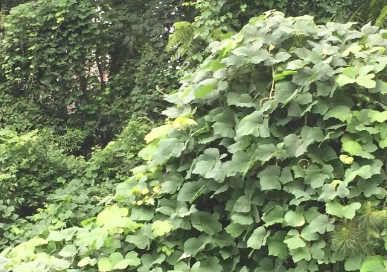Having a beautiful and well-maintained yard is a dream for many homeowners. However, one common challenge that can hinder the beauty of your outdoor space is the presence of invasive plants. These plants can quickly take over your yard, choking out native species and causing damage to your property. If you're dealing with invasive plants in your yard, don't worry! In this blog post, we will explore some effective methods to remove these unwanted plants and restore the health and beauty of your yard.
What are invasive plants?
Invasive plants are non-native species that have the ability to spread rapidly and outcompete native plants. They often have no natural predators or diseases to keep their populations in check, allowing them to dominate an area and disrupt the natural ecosystem. Some common examples of invasive plants include Japanese knotweed, kudzu, and purple loosestrife.
Why should you remove invasive plants?
Removing invasive plants from your yard is essential for several reasons. Firstly, they can crowd out native plants, reducing biodiversity and disrupting the natural balance of your ecosystem. Secondly, invasive plants can cause damage to structures such as fences, walls, and even foundations. Lastly, some invasive plants, like poison ivy, can pose a threat to human health by causing allergic reactions or skin irritations.
Methods to remove invasive plants
1. Manual removal: For small infestations, manual removal can be an effective method. Use gloves and hand tools such as shovels or trowels to dig out the plants, making sure to remove the entire root system. Dispose of the plants properly to prevent reinfestation.
2. Herbicides: In cases of larger infestations, herbicides can be used to control invasive plants. It is important to choose a herbicide that is specifically designed to target the invasive plant you are dealing with. Follow the instructions carefully and take necessary precautions to protect yourself, other plants, and the environment. You don't want to kill your friendly insects, birds and bees.
3. Smothering: Smothering involves covering the invasive plants with a thick layer of mulch or plastic sheeting to block sunlight and prevent them from growing. This method is particularly effective for controlling groundcover invasives.
4. Biological control: Biological control involves introducing natural enemies of the invasive plant, such as insects or pathogens, to control their population. This method should only be used under the guidance of experts to prevent unintended consequences.
Preventing future infestations
Preventing future infestations is crucial to maintaining a healthy yard. Here are some tips to help you prevent the spread of invasive plants:
- Be cautious when introducing new plants to your yard. Research their invasive potential and choose native or non-invasive alternatives.
- Regularly monitor your yard for any signs of invasive plants and take immediate action to remove them.
- Avoid dumping yard waste in natural areas, as it can contain seeds or fragments of invasive plants.
- Stay informed about invasive plant species in your area and participate in local eradication efforts.
By following these methods and prevention strategies, you can effectively remove invasive plants from your yard and create a healthier and more vibrant outdoor space. Remember, it's important to be persistent and consistent in your efforts to ensure long-term success. If you're unsure about the best approach for your specific situation, consult with a local gardening or landscaping professional for expert advice.

Leave a comment